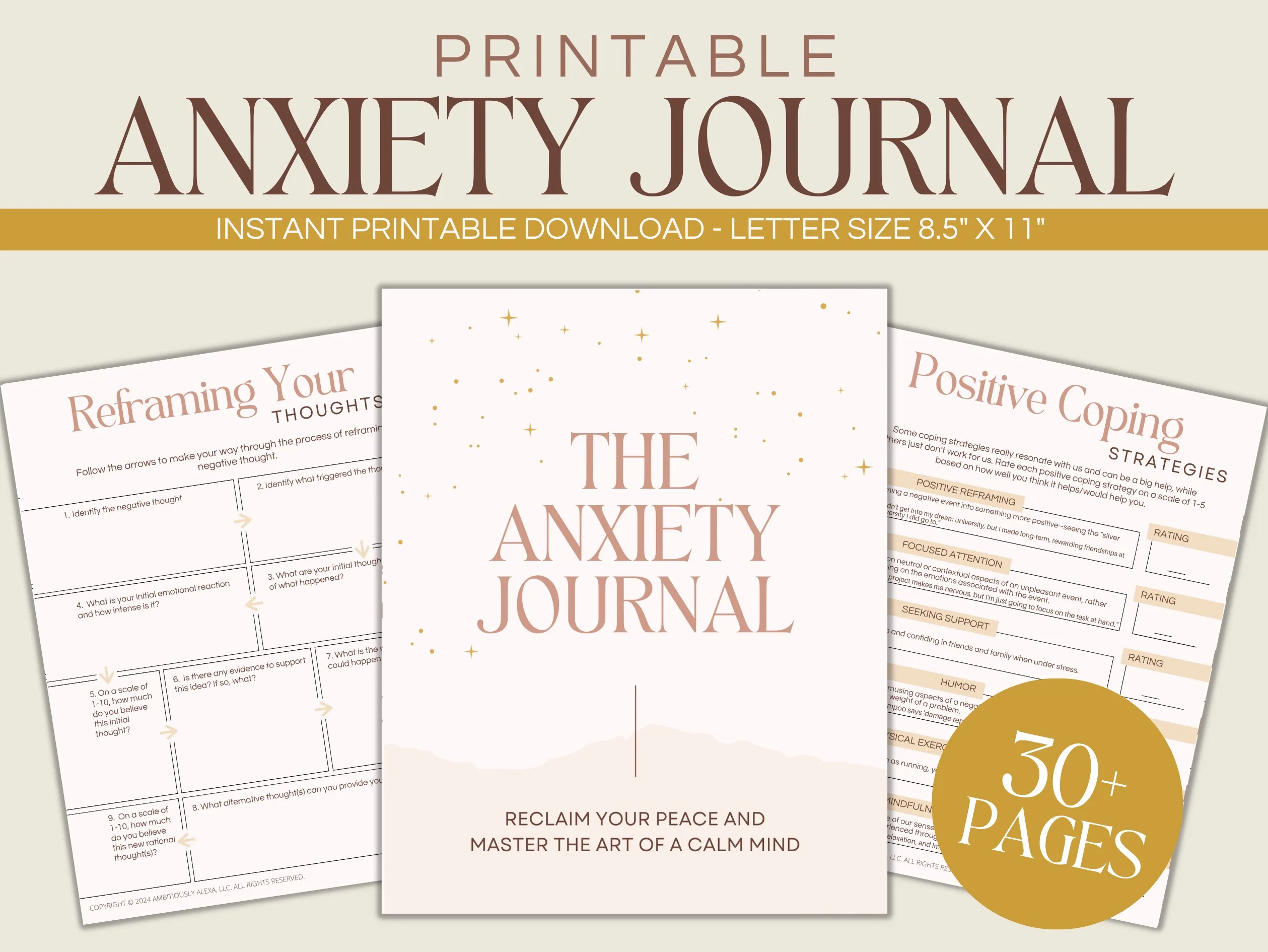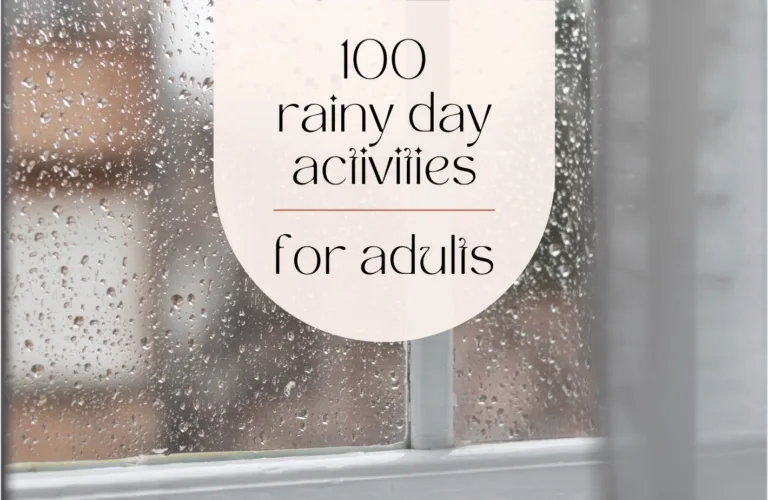Stuck In An Anxious Cycle? How To Control Fight or Flight
This post contains affiliate links and I may receive a small commission (at no extra cost to you) if you sign up or purchase products or services mentioned. Read the full disclosure here.
Last Updated on February 6, 2024
If you’re looking for new and effective ways to:
- Stop your anxiety in its tracks
- Feel calm during stressful events
- Learn how to control your fight or flight stress response
Then read on!
When we face an event that causes stress, anxiety, or fear, our bodies produce unpleasant physiological symptoms such as racing heartbeat, sweating, muscle tension, and rapid breathing.
Just to provide a little background info: things like making an important phone call, speaking up in class, and getting stuck in traffic send a signal to the amygdala (an area of the brain responsible for our emotional reactions).
The amygdala then sends information to our hypothalamus, which in turn communicates with our nervous system and causes these unpleasant emotional and physical symptoms.
Your brain is good at sticking to this rhythm of being alerted by stress and commanding a negative (and sometimes, quite frankly unnecessary) emotional and physical response. Interrupting this rhythm is no easy feat, but if you challenge your thought patterns you will have better control over the fight or flight response.
There are many generic recommendations for managing stress, such as exercise, meditation, etc. But I’ll be teaching you how to restructure your thought patterns, or your habits, surrounding this fight or flight response.
This blog post is all about how to control fight or flight
The key to control fight or flight? Pay attention to the OUTCOME of stressful events

If you’re actively in a fluster of anxiety, you probably have difficulty paying attention to much outside of how you’re feeling and what you’re worried about. You may be worried that the outcome of an anxiety-provoking event will turn out bad, and that fear is all you can fixate on.
But sometimes, we’re so caught up in the “what if”’s that we fail to be present during the actual outcome of a situation. This is problematic because if we never remember the outcome of anxiety-provoking incidents, we have no personal data to fall back on when we’re presented with the same situation in the future.
As a result, we fall into a cycle of not having any reassurance or coping strategies to remind us that a situation might not result in the catastrophe we think it will.
How do we combat this? By being present in an anxiety-provoking event or situation from start to finish. This will allow you to recognize and remember the pattern of thoughts and events, which creates “data” for yourself, if you will, for how to approach future roadblocks.
Think of it in 3 steps (before, during, and after a stressful event):
- Before: As you’re anticipating an upcoming stressful event, take note of your initial thoughts and emotions.
- During: What actions and events are taking place, and how are you handling the situation?
- After (most important!): What was the outcome? Did things go the way you hoped, or not?
I’ll explain each of these in greater detail.
{RELATED POST: Should You Go Back to Therapy? Here’s Why I Went Back}
Before the event: identifying initial thoughts and emotions
Imagine you’re anticipating a very important phone call.
Are you feeling just a little nervous, or are you extremely on edge? What is it about the phone call that you’re nervous about? Are you worried about not explaining yourself over the phone properly, and therefore not getting your desired outcome out of the call?
Be aware of these initial thoughts and reactions and take note of them.
Then, if you can, think back to similar phone calls where the outcome went as desired. Why was that? Can you channel your current feelings into the relief you felt at the end of a previous positive phone call?
Don’t worry if you’re having trouble remembering positive outcomes of similar events right now. This exercise is to help you create a memorable pattern of positive outcomes moving forward so that you will be able to retrieve these memories in the future as you improve.
Do you struggle with anxiety? My (free!) printable anxiety tracker is a great way to keep track of your anxious symptoms and start your journey to better anxiety management! Grab it below!
During the event: focus on the actions and events taking place
Continuing with the phone call example, let’s imagine you are currently speaking with whoever is on the line.
What is the other person saying? How are you responding? Are you able to speak clearly and calmly? Are you able to express your words effectively? Are things going well, or are you experiencing trouble?
It’s normal to stumble under pressure. After a conversation, we love to think back on all the “better” arguments we could have made. That’s because it’s easy to reflect on the “right” thing to say when you’re no longer put on the spot.
However, give yourself credit for the things you did say that helped the situation, or for being brave enough to speak up in the first place.
RELATED: 58 Affirmations for Social Anxiety in Every Situation
After the event: What was the outcome?
So, did the phone call go the way you hoped? Was anything resolved? How is your stress state now compared to before and during the call?
As I said, being present during this outcome is the most important part of the process! If the phone call turned out well for you, that is fantastic information to have in your back pocket to remind you that things can and do work out for you.
The more you practice remembering the outcome, you might even realize that things are working out in your favor, more often than not. We tend to fixate on negative outcomes because negative information influences our evaluations more strongly than positive information.
So even if the phone call didn’t turn out well for you, that isn’t exactly indicative of negative outcomes being a common occurrence for you.
My guided anxiety journal can also help you check in on your anxiety and deal with stressful outcomes. Having an outlet for reflection like this can help you tremendously in your journey with this process!
Grab it below!
How the memory of outcomes helps control your fight or flight response
The goal is to build up a collection of memories for the outcomes of stressful events so that you have these memories present with you for future reference. Studies support that reminiscing on the positive helps to dampen the stress response.
If you’re presented with a stressful event and your mind jumps to the worst conclusions, stop these negative thoughts in their tracks by thinking back to a time when something worked out positively for you.
This will help you reassure yourself that things certainly can work out. This, therefore, provides you with a better handle on managing your emotions in response to the situation. And with that, you will have a better grasp of your fight or flight response.
During a stressful event, it’s very easy to feel so overwhelmed by your emotions that you’re unable to be present enough to remember the outcome. This technique takes time and intentional thought, so don’t be discouraged if it doesn’t come easy to you.
Being aware of the outcomes of stressful events is something I’ve only recently been able to master, but I believe it’s incredibly beneficial to work towards to control your fight or flight response!
IF YOU LIKED THIS POST, YOU’LL LOVE THESE TOO!
Happy Brain Chemicals: What They Are and How to Hack Them
Printable Anxiety Journal: 30+ Mental Health Worksheets (PDF)
Why Self Soothing for Adults is Crucial + 30 Self Soothing Techniques
Anxiety Journal Prompts: 42 Prompts When You’re Overthinking










Wow–This is incredibly intuitive!!!
My hope is that everyone suffering with, I will quote the author here “Fight or Flight,” will realize take away here by redirecting your thoughts and understanding the correlation of cause to positive outcomes. A well written blog and extremely important topic.